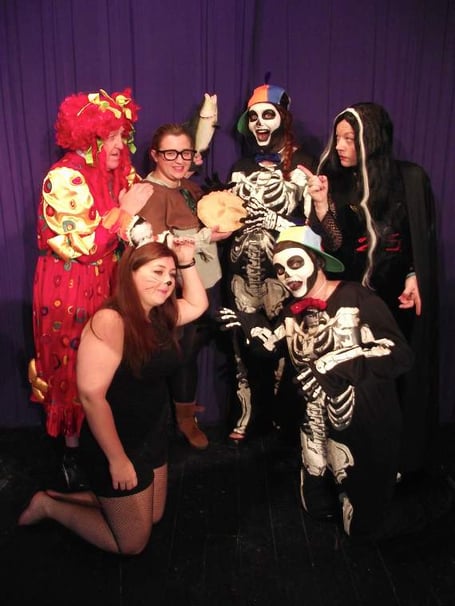IT’S said that the British invented the pantomime, the traditional knockabout, fairytale show loosely based on a nursery rhyme that fills theatres up and down the land at this time of the year.
All ages love a panto, be it a professional production with top-billed stars playing the main characters or local amateur dramatic companies relying on wobbly scenery and second-hand costumes. They are a family must in the new year.
Where else can you hiss and boo, join the singalong competition and, best of all, especially if you are very small, yell out ‘he’s behind you!’ when the villain approaches?
This year, there is a wealth of pantomimes to choose from and, as always, Holybourne Theatre’s offering this year will be a team effort.
“We don’t have individual stars, we all play equal parts,” said chairman John Priddle, who is taking on the role of the Dame.
This year they have chosen Puss in Boots, a tale about a cat who talks. It will also feature a cast of 30 or so as their youth theatre is also involved in the production. The director is Will Rixon, who has written a “very funny script” which keeps to tradition but with some modern references.
Also, said John, there will be “plenty of audience participation” all the way through the show.
The first performance at Holybourne Theatre is a matinee on Sunday, January 29, at 2pm.
There is also a matinee performance on February 5 (2pm), followed by an evening performance (7pm).
On Saturday, February 10, there will be an evening performance (7pm).
On February 11, there will be both a matinee (2pm) and an evening performance (7pm).
Sticking to tradition, the Phoenix Theatre in Bordon has chosen Jack and the Beanstalk for its annual pantomime this year and Josh Dixon is directing and has written a script that promises “sparkle, comedy, magic and mayhem”. He has cast a Phoenix favourite, Ben Kennedy, as the Dame.
The panto runs from January 19-28, starting at 7.30pm, with a special “relaxed performance” for people with autism on January 22.
The Medstead Players mixed the traditional with the bizarre with their production of Trouble in Evermore, written and directed by Nita Simpson, who is also known for her dramatic plays.
There was big cast, including children, and she admitted: “The storyline was a strange mix as we had Aladdin marrying Cinderella, and we also had Frankenstein and Peter Pan in the story.
“Our principal character, Calamity Dame, was played by Will Rouse. We also had a fairy called Sparkle and plenty of slapstick comedy.”
The Quantum Theatre brought a touch of magic to Gilbert White’s House in Selborne on December 10 with two Christmas productions directed by Michael Whitemore – The Snow Queen in the afternoon and A Christmas Carol in the evening.
Surprisingly, this essentially British entertainment dates back to the Ancient Greeks who gave us the word pantomime from what they called “panto mimes” where a dancer acted all the roles.
However, it was the Romans who produced the first pantomimes, basing them on Greek tragedy, so not many laughs there, and a little short on humour as there was only one male dancer, in a silk tunic and using different masks acted out a “dance story” accompanied by a sung libretto.
In England, the forerunner of our present panto began with the Mummers performing plays in the Middle Ages, usually a traditional English folk play based loosely on the St George and the Dragon legend, and performed during Christmas gatherings. They contained the origin of many of the archetypal elements of present day pantomime, such as stage fights, coarse humour, fantastic creatures, gender role reversal, and good defeating evil.
In the first two decades of the 18th Century, two rival London theatres – Lincoln’s Inn Fields Theatre and the Theatre Royal, Drury Lane – presented productions that had elements of our present day panto with stories that contained elements of opera and ballet and ended with a comic “night scene”.
These early pantomimes were silent, or “dumb shows”, but by the early 1800s children began going to the theatre around Christmas, New Year and Easter primarily to witness the craziness of the harlequinade chase scene with the great Grimaldi in the title role.
It was the most exciting part of the “panto”, because it was fast paced and included spectacular scenic magic as well as slapstick comedy, dancing and acrobatics.
By the end of the 19th Century, Victorian actors began creating their own interpretations of pantomime and from this the modern version developed as a popular form of theatre, incorporating song, dance, buffoonery, slapstick, cross-dressing, in jokes, topical references, audience participation, and mild sexual innuendo.

-Cllr-Lulu-Bowerman-Tim-Lawton--Image-LDRs.jpeg?width=209&height=140&crop=209:145,smart&quality=75)



Comments
This article has no comments yet. Be the first to leave a comment.